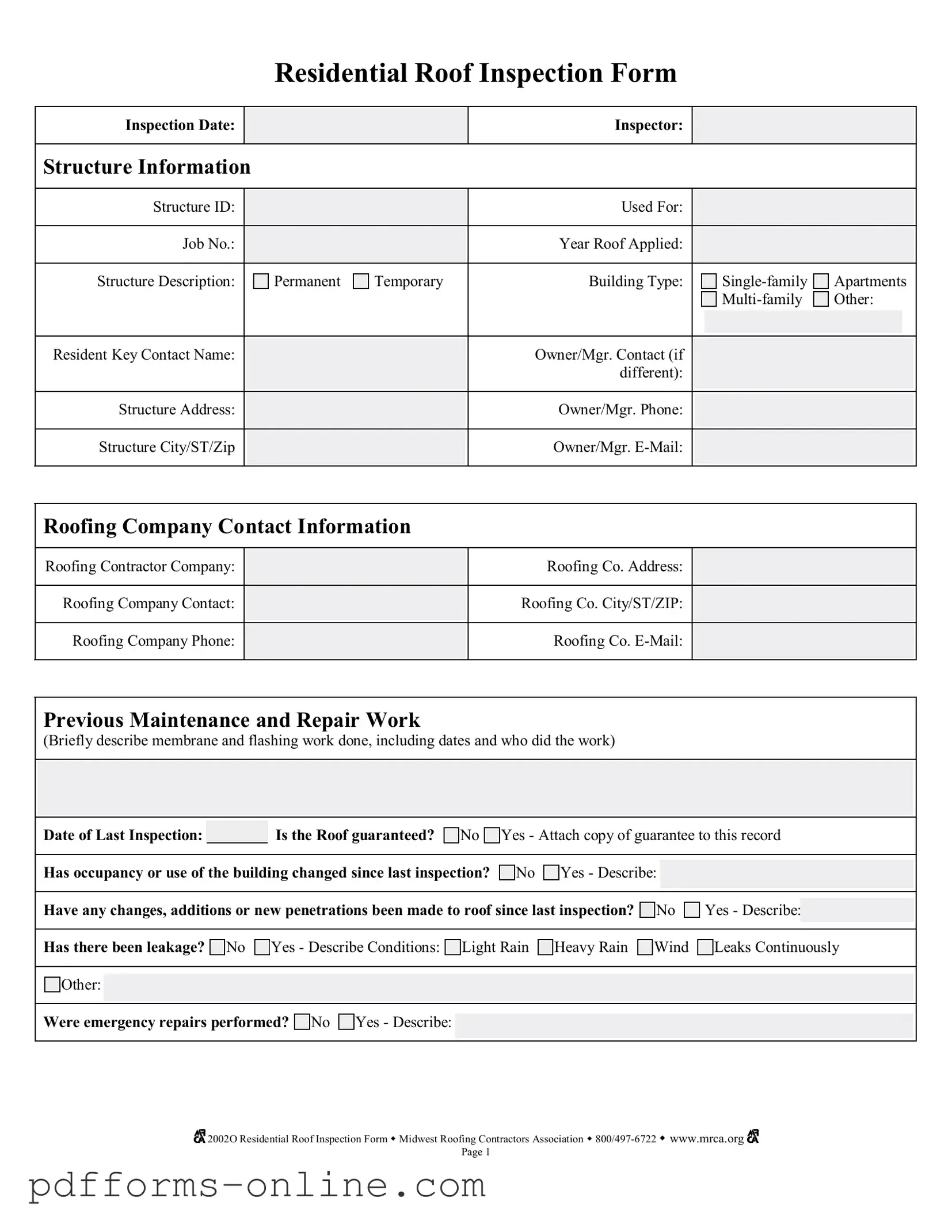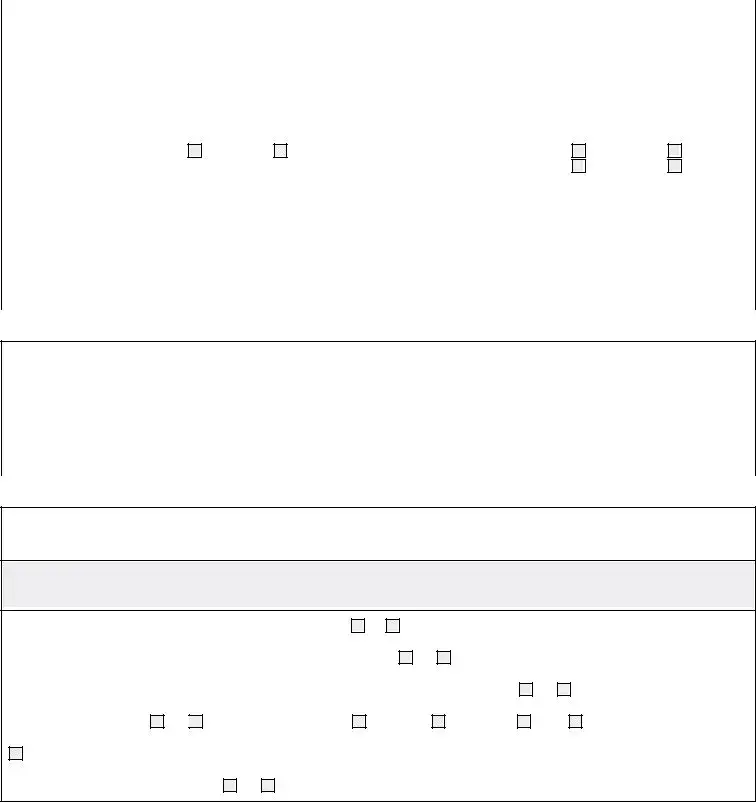The Roof Maintenance Log serves a similar purpose to the Roof Inspection Form by tracking the history of maintenance and repairs performed on a roof. It includes details such as dates of service, types of repairs conducted, and the contractors involved. This document allows property owners to maintain a comprehensive record of all activities related to roof upkeep, which can be crucial for warranty claims or future inspections. By having this log readily available, it becomes easier to identify patterns of wear or recurring issues that may require more immediate attention.
The Building Inspection Report also parallels the Roof Inspection Form, as it evaluates the overall condition of a building, including its roof. This report typically covers structural integrity, safety hazards, and compliance with building codes. While the Roof Inspection Form focuses specifically on roofing elements, the Building Inspection Report provides a broader overview, helping property owners understand how the roof's condition fits into the overall health of the building. Both documents are essential for maintaining safety and compliance standards.
The Property Condition Assessment (PCA) is another document that shares similarities with the Roof Inspection Form. A PCA evaluates various aspects of a property, including the roof, and assesses its current condition and estimated remaining life. This assessment is often used in real estate transactions to inform buyers about potential future costs. While the Roof Inspection Form provides a snapshot of the roof's current state, the PCA offers a more comprehensive analysis that can influence financial decisions regarding property investment.
The Warranty Documentation is closely related to the Roof Inspection Form as it outlines the terms and conditions of the roof's warranty. This document specifies what is covered, the duration of coverage, and any maintenance requirements to keep the warranty valid. When conducting a roof inspection, it is crucial to reference the warranty documentation to ensure compliance with its terms. This helps property owners avoid costly repairs that could arise from neglecting warranty conditions.
The Maintenance Schedule is akin to the Roof Inspection Form in that it outlines routine inspections and maintenance tasks necessary to keep the roof in good condition. This schedule helps property owners proactively manage their roofing needs, ensuring that inspections are conducted at regular intervals. By adhering to a maintenance schedule, property owners can prevent minor issues from escalating into significant problems, thereby extending the roof's lifespan.
The Roof Maintenance Log is similar to the Roof Inspection Form because it documents specific maintenance tasks performed on the roof over time. This log includes details such as dates of service, descriptions of work completed, and who carried out the tasks. It helps track maintenance history, ensuring that any changes or repairs are recorded systematically, which can offer insights during future inspections. For those interested in a formal structure for reporting, you can open the pdf that provides additional guidance on documentation procedures.
Finally, the Insurance Claim Form is similar to the Roof Inspection Form as it documents damages and repairs needed for insurance purposes. When a roof is damaged due to a storm or other events, this form is essential for filing a claim. It requires detailed descriptions of the damage and often references inspection findings. Both documents work together to ensure that property owners receive the necessary support from their insurance providers while maintaining accurate records of the roof's condition.


 2002O Residential Roof Inspection Form w Midwest Roofing Contractors Association w
2002O Residential Roof Inspection Form w Midwest Roofing Contractors Association w 

 2002O Residential Roof Inspection Form w Midwest Roofing Contractors Association w
2002O Residential Roof Inspection Form w Midwest Roofing Contractors Association w 

 2002O Residential Roof Inspection Form w Midwest Roofing Contractors Association w
2002O Residential Roof Inspection Form w Midwest Roofing Contractors Association w 

 2002O Residential Roof Inspection Form w Midwest Roofing Contractors Association w
2002O Residential Roof Inspection Form w Midwest Roofing Contractors Association w 

 2002O Residential Roof Inspection Form w Midwest Roofing Contractors Association w
2002O Residential Roof Inspection Form w Midwest Roofing Contractors Association w 